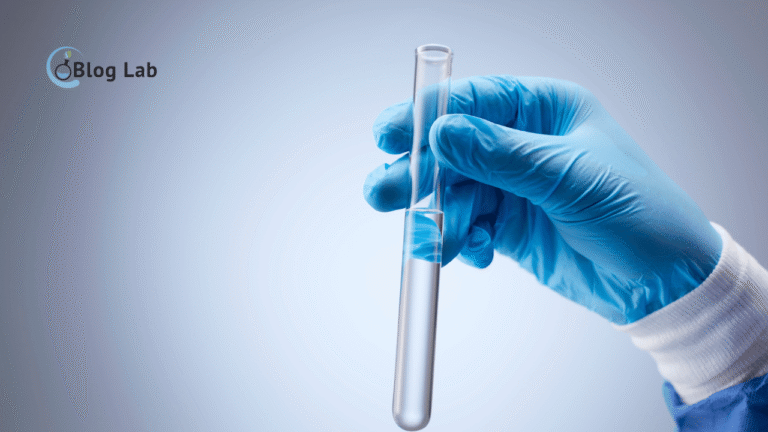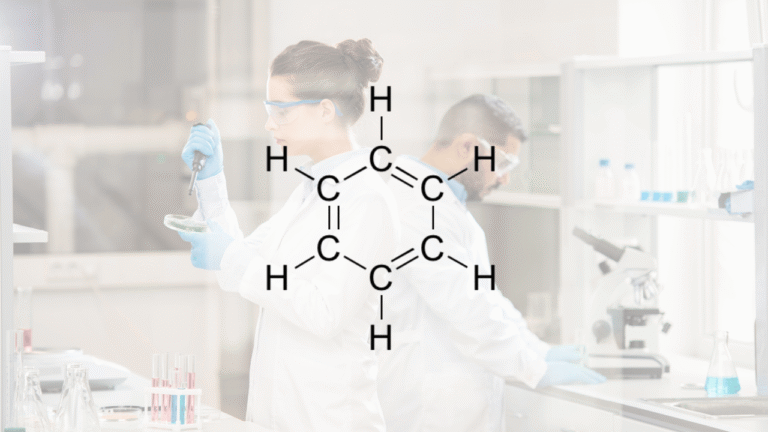Ten Artificial Works Laboratories

Some examples A lab tool made of plastic. It's a pipe, a micropipe, a test tube, a sample bottle, and some gauges like a plastic ruler or a plastic turnover. These tools are usually made of plastic because they have some advantage compared to other materials like glass or iron. For example, plastic is lighter and easier to carry, more resistant to ruptured or cracked, and safer to operators who use it because it doesn't have sharp edges or cold edges.
However, despite having some excellence, plastic also has a weakness that needs to be noticed. One of the weakness of plastic is that it can't stand high heat, so tools made of plastic can't be used in a process that requires high temperatures. Plus, plastic can also have chemical damage, so it needs to be careful when using a plastic lab tool.
A list of lab tools made up of P.M.s.
Plastics used on laboratory tools must be impervious to chemicals that will be used during the process of research or measurements. One type of plastic that can be used is polyethylene, which is one type of polymer that's made of an ethylene monomer. Polietilen has a chemical and heat-resistant properties, so they're often used as raw materials for plastic labs like test tubes, bottles, etc. The derivative of polyethylene, like a tereftalic polyethalate and polypropilen (PP), can also be used as a raw material for laboratory tools because it has similar properties to polyethylene. However, it's important to make sure that the chosen plastic is appropriate and will not react with the chemicals that will be used.
Here's a list of 10 lab tools made of plastic and function:
1. Plastic Tete Pipet

Pipet drops The plastic is a lab tool made of plastic and used to measure and drip fluid precisely. Plastic drops are usually used in all kinds of laboratory applications, such as chemical analysis, pharmaceutical supply production, and fluid sample samples.
Plastic drops are made up of thin, long tubes that have a little hole in the end. It can be regulated by the scale on the picket tube. Moreover, plastic drops are also equipped with a mechanism that allows users to take the proper fluid and repress it precisely as well.
Plastic drops can be distinguished into certain types based on how they take the fluid. Some of the types of plastic drops that are used are hand drops, auto-drops, and electronic drops. Manual drops are the simplest kind of pipes and usually used to measure and drip small amounts of fluid. Automatic drops and electronic drops are more sophisticated types of pipes and usually used to measure and drip the amount of fluids larger properly.
2. Plastic Beaker Glass

Glass beaker plastic is a lab tool made of plastic and used to hold, measure, and mix liquid. Plastic beakers are usually made of polypropilen or polyethylene, which is a type of plastic that is impervious to chemical decay.
The plastic beaker glass has a simple shape, which is like a glass with the same width and height. Normally, a plastic beaker glass is equipped with a scale printed on the wall, which allows the user to measure the volume of the liquid precisely. Plastic beaker glasses are also usually equipped with a lid that can be used to close glasses when not used or during the process of refueling fluids.
A plastic beaker glass can be distinguished into some kind based on its capacity. Some kind of plastic beaker glass that's commonly used is a 50-mile beaker glass, a 100-mile beaker glass, a 250-mile beaker glass, and a 500-mile beaker glass. A plastic beaker glass can also be distinguished based on its violence, which is a strong plastic beaker glass and is impervious to scratches or a softer plastic beaker glass and easily scratched.
3. Plastic Shaves

Measure glass plastic is a lab tool made out of plastic and used to measure the volume of fluids precisely. A plastic measuring glass is usually made of polypropilen or polyethylene, which is a type of plastic that is impervious to chemical decay.
The plastic measuring glass has a simple shape, which is like a glass with the same width and height. Normally, a plastic measuring glass is equipped with a scale printed on the wall, which allows the user to measure the volume of the liquid precisely. The plastic measuring glass is also usually equipped with a lid that can be used to close a glass when it is not used or during the process of mixing the fluid.
A plastic measuring glass can be distinguished into some kind based on its capacity. Some of the types of plastic measuring glasses that are commonly used are 50 ml cups, 100 ml cups, 250 mL cups, and 500 mL measuring cups. A plastic measuring glass is also distinguishable from the severity of violence, a plastic measuring glass that is strong and impervious to scratches or a soft plastic measuring glass that is easily scratched.
Four. Spray Bottle

The spray bottle The lab is a laboratory tool made of plastic or glass and used to spray liquid properly. Lab spray bottles are usually made of polypropilen or polyethylene, which is a type of plastic that is impervious to chemical decay, or from borosilacing glass that is impervious to heat and chemistry.
The lab spray bottle has a simple shape, which is like a bottle with a lid that comes with a spray. This spray is usually made of plastic or metal and equipped with a pressurized button to extract liquid from a bottle. Normally, lab spray bottles are also equipped with a printed scale on the wall, which allows users to measure the volume of the liquid to be sprayed precisely.
A bottle of lab spray could be distinguished into some kind based on its capacity. Some kind of lab spray bottle that's used to be a 50 ml spray bottle, 100 ml spray bottles, 250 ml spray bottles, and 500 mL spray bottles. A bottle of lab spray can also be distinguished based on the severity of violence, which is a strong lab spray bottle and is impervious to scratches or soft spray bottles and easily scratched.
5. Reaction tube rack

Reaction tube rack is a lab tool made of metal or plastic and used to store tube reactions neatly and regularly. Reaction tube shelves are usually made of steel or aluminum and equipped with a number of places that can be used to store reaction tubes.
Reaction tube shelves are usually used to store test tubes that are used in various laboratory applications, such as chemical analysis, pharmaceutical availability, and fluid sample samples. The reaction tube rack has a simple shape, which is like a shelf with a number of places in it. Normally, a reaction tube rack is equipped with a locking system that allows those test tubes to stay safely in place.
The tube shelf reactions can be distinguished into some kind based on the number of places it's available in. Some kind of tube shelf reaction that's commonly used is a tube rack reaction with six places, tube shelves reaction with 12 places, and tube shelves reaction with 24 places. The test tube rack can also be distinguished based on its violence, which is a strong tube shelf reaction and is impervious to scratches or tubes that are softer and easily scratched.
Six. Plastic Kuvet

Plastic kuvet is a lab tool made of plastic and used to store liquid properly. Plastic kuvet is usually made of polypropilen or polyethylene, which is a type of plastic that's impervious to chemical decay.
Plastic kuvet has a simple shape, which is like a container with the same flat, tall base. Normally, plastic kuvet is equipped with a scale printed on the wall, which allows the user to measure the volume of fluid precisely. Plastic kuvet is usually equipped with a lid that can be used to close the kuvet when it's not used or during the process of mixing the fluid.
Plastic kuvet can be distinguished into some kind based on its capacity. Some types of plastic kuvet used to be kuvet 50 ml, kuvet 100 ml, kuvet 250 mL, and kuvet 500 mL. Plastic kuvet is also distinguishable based on the severity of violence, which is a strong plastic quvet and is impervious to lacerations or soft plastic kuvet and easily scratched.
Seven. Centrifuge tube

Centrifuge tube It's a lab device that's used to conduct high-speed fluids, so the solid particles that are in it are separated from the liquid. The centrifuge is usually made of glass or plastic and equipped with a firmly locked lid.
The centrifuge tubes are used in all sorts of laboratory applications, such as the separation of solid particles from the fluid, the splitting of the cell-cells from the fluid sample, and the separation of proteins from the fluid sample. The centrifuge has a simple shape, which is like a tube with the same flat, tall base. Normally, the centrifuge tubes are equipped with a scale printed on the wall, which allows the user to measure the volume of fluid precisely.
The centrifuge can be distinguished into some kind based on its capacity. Some of the types of centrifuge tubes used were the centrifuge tubes 50 mL, the centrifuge tubes 100 mL, the centrifuge tubes 250 mL, and the centrifuge 500 mL. The centrifuge can also be distinguished based on its violent rate, which is a powerful centrifuge tube and is impervious to scratches or a softer and easy to scratch.
Eight. Plastic Bottle

Bottle Lab plastic is a bottle made of plastic that's used to store and present fluids or samples in the lab. This plastic bottle is usually made of plastic that is impervious to chemical reactions and not easily damaged, so it's suitable to be used in laboratory environments that require hygiene and high quality. The plastic lab bottle is usually equipped with a lid or a secure capsule and is impervious to pressure, so it can ensure the safety and safety of the samples stored inside. Lab plastic bottles are also available in different sizes and volumes, so it can be adjusted to each user's needs.
Nine. Plastic Funnel

Corong Lab plastic is a lab tool made of plastic and used to channel fluid or samples from one container to another. These plastic funnels are usually made out of plastic that are resistant to chemical reactions and not easily damaged, so it's suitable to be used in laboratory environments that require high hygiene and high quality. The lab's plastic funnel is usually equipped with a lid or a secure capsule and is impervious to pressure, so it can guarantee the safety and safety of the samples transferred through the funnel. Lab plastic funnels are also available in different sizes and long, so they can be adjusted to each user's needs.
10. Plastic deacon

Deaator plastic is a lab tool made of plastic and used to keep moisture samples or materials stored in it. This plastic decor is usually made of plastic that is impervious to chemical reactions and not easily damaged, so it's suitable to be used in laboratory environments that require high hygiene and high quality. Plastic deacon is a container or container equipped with a funnel or a hole to insert a sample or a stored ingredient, and a sealed lid. Plastic decor is also equipped with silica gel or other moisture absorbing materials to keep moisture samples or materials stored inside constant and controlled. Plastic reactors are also available in different sizes and volumes, so they can be adjusted to each user's needs.
Conclusion
Plastics have a fundamental weakness that's easily reactable with chemicals. It causes plastic rarely used for laboratory tools. Nevertheless, there are some lab tools made of plastic that have been mentioned in this article.





